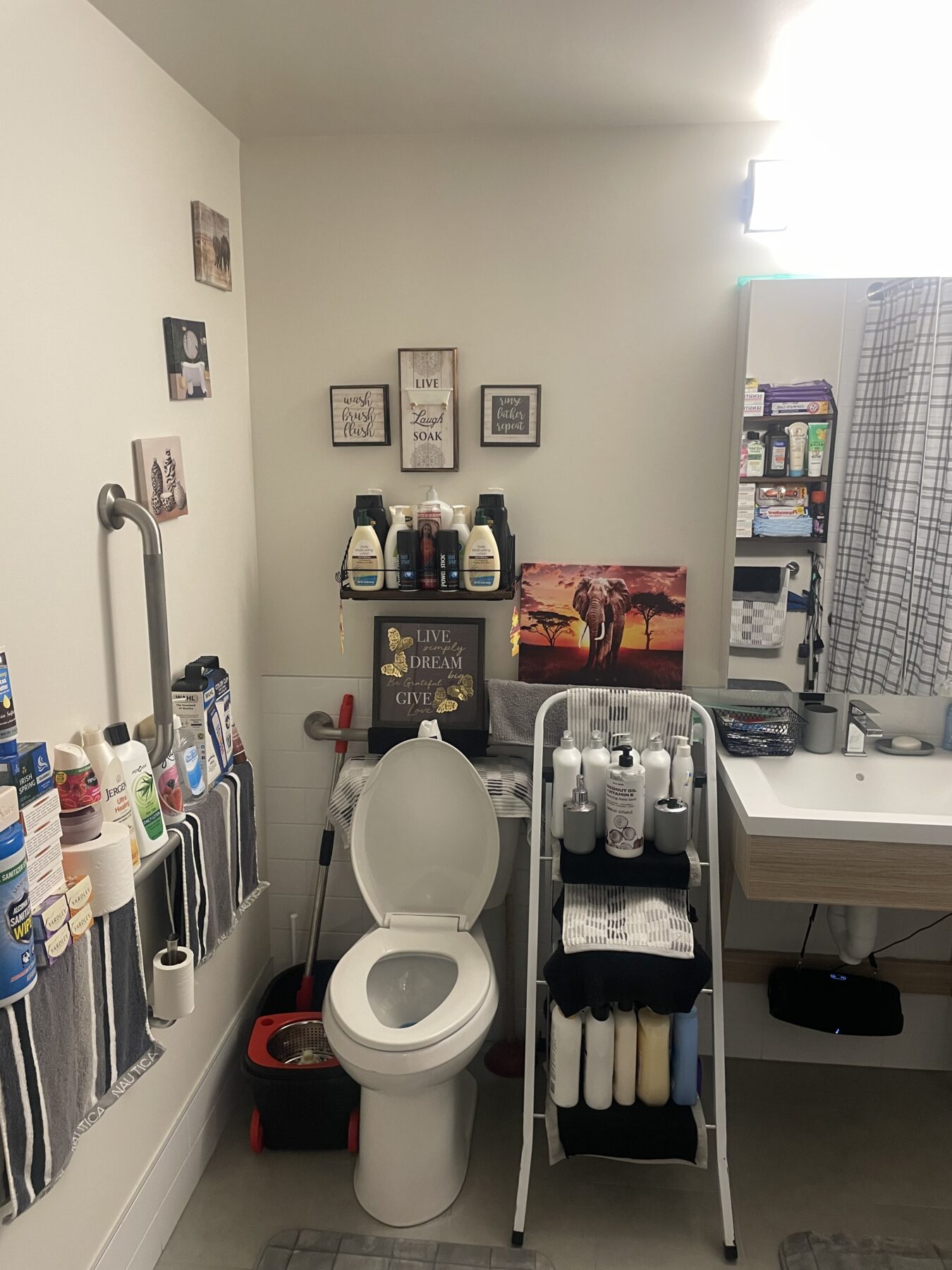Jose Vega, 52, had already been “in the box” 12 times, but this episode was by far the worst. With his wheelchair taken away from him by correction officers, he was trapped in his bunk bed at the Shawangunk Correctional Facility, in Wallkill, New York. Deprived of food, medical supplies, and changes of clothes, he spent three days on a soiled mattress unable to move, waking and sleeping his own feces, he said.
“It was 1996 or ‘97, I believe,” said Vega, for whom life now looks very different. Vega lives in a safe apartment in Brooklyn, but for what seems like a lifetime ago, Vega served 24 years in prison for second-degree murder. It was a time in his life when he said that the days blurred into each other.
Being a disabled incarcerated person is like living in a prison within a prison, said Vega, who has depended on his wheelchair for most of his life. When he was 21, he was shot during a traffic argument, which left him paralyzed from the chest down.
When he was incarcerated, he could not access the main yard like everybody else, and his cell was never big enough to move freely. Vega relied on 30 catheters a week, and during his three-night stay in solitary confinement, he was forced to reuse the same one, cleaning it with a paper towel. He almost died of chronic urinary-tract infection while behind bars, he said.
“The prison system is made to make you suffer,” Vega said.
Jamie Morton, 65, struggled in prison too, though not with a disability, but as a transgender woman housed in a male prison. He served 34 years for second-degree murder. Although he now identifies as a man, he hasn’t forgotten the danger he was in while incarcerated.
“Luckily, I had enough testosterone in me to fend for myself,” said Morton, who wasn’t taking estrogen at that time. “If I can describe the prison system in one word, it’s ‘diabolical.’”
While prison populations have decreased over the past decade nationwide, the number of incarcerated older adults is growing faster than ever before. Incarcerated people aged 55 and older are considered geriatric, due to the “accelerated aging” phenomenon, where they present 10 years older, due to physical and mental deterioration from prison stress.
But the conditions within prison aren’t the only hurdles to overcome for aging people who are incarcerated. Their re-entry back into normal life after decades of isolation often poses another challenge.
The day Vega was released was a “beautiful experience,” he said. He left Five Points Correctional Facility on June 5, 2018, with his family waiting for him. “They told me, ‘We gonna go have a nice breakfast,’’ and they took me to a casino,” he said.
But Vega was haunted by the possibility of being homeless after he left prison, given the difficulties of finding housing post-incarceration, which pose an even greater challenge for people with disabilities.
“It’s like playing a game of musical chairs,” said Patti Prunhuber, a senior housing attorney.
In New York, for every 100 individuals with extremely low incomes, there are only 32 affordable rental homes according to the data from the National Low Income Coalition.
So, Vega lived with his family, while he reached out to dozens of housing organizations, but none would take him.
Formerly incarcerated people above 45 are most vulnerable to homelessness, according to a 2022 report by Justice in Aging, a legal advocacy group for seniors. Local housing authorities, who are responsible for setting the eligibility standards for tenants, often engage in housing discrimination by outright excluding people with criminal records, regardless of duration or nature of the crime, the report stated.
Morton was released from Green Haven Correctional Facility in 2021. For the first time, the guard let him sit in the front of the van. “You’re a free person now,” he told Morton.
But so much of that freedom is contingent upon organizations that help people who’ve been in the criminal justice system.
Morton lived in a hotel in Queens free of charge for more than eight months to avoid the shelter system. This housing provided by the Exodus Program, a non-profit that helps the reintegration of formerly incarcerated individuals.
“Shelters aren’t kind to older adults either,” said Prunhuber, adding that people must show up to a shelter on the day they need somewhere to stay, and hope that a bed is available.
In April 2022, Morton filed an application for permanent housing at the new Marcus Garvey Apartments, offered by the Osborne Association, a non-governmental organization focused on criminal justice reform. Within four months he was granted a studio in Brownsville, Brooklyn, paying $175 in monthly rent, he said.
“Once I was accepted, they rolled out the red carpet,” said Morton. Everything from furniture to kitchen supplies was provided to the 52 residents, thanks to the grant given by the Empire State Supportive Housing Initiative, which provides funding for supportive housing across the state, covering 70% of the costs.

Jose Vega’s fully accessible bathroom was outfitted by the Osborne Association when he became their first resident. (Credit: Cecilia Blotto)
Vega was the first resident to arrive at Osborne in June 2022. His apartment was made entirely accessible so he could live independently.
“They asked me what needed to be done; I want to cry just thinking about it,” Vega said. Now, he advocates for disabled people who are incarcerated, and he hopes to publish a book on his experience. “I’m saving up for a suit for my work.”
Morton considers himself lucky. His apartment is immaculate due to his love for tidiness. “I never live in filth and squalor,” he said. He has taken up drawing again, including a sketch of huge war tank. He exercises three times a week with an instructor provided by Osborne. “I don’t look bad considering I’m 65, right?” he chuckled.
About the author(s)
Cecilia is a full time MS student from the United Kingdom.



